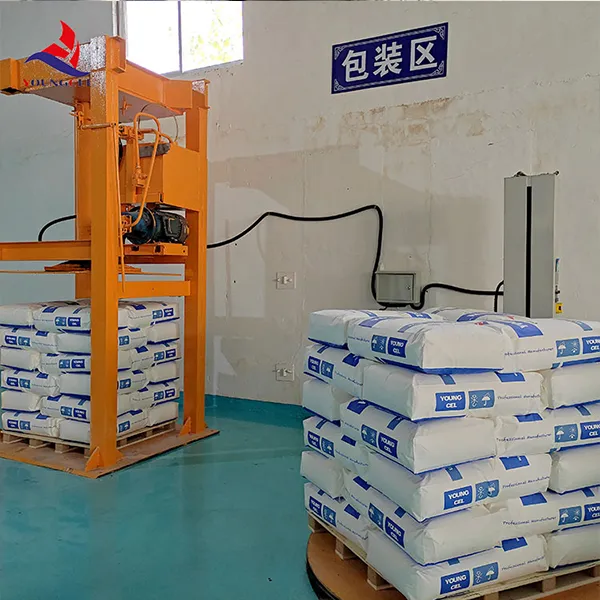HPMC for Gypsum Enhancing Performance and Versatility
Hydroxypropyl Methylcellulose (HPMC) is a versatile cellulose ether widely used in various construction materials, particularly in gypsum-based products. Its unique properties make it an indispensable additive in the formulation of drywall compounds, leveling compounds, and other gypsum-related applications. This article explores the significance of HPMC in gypsum, its benefits, and its applications.
What is HPMC?
HPMC is a non-ionic, water-soluble polymer derived from cellulose. It is produced by chemically modifying cellulose through a process of etherification. This modification results in a compound with excellent binding, thickening, and emulsifying properties. Because HPMC is derived from natural cellulose, it is generally recognized as safe and is compatible with a variety of other chemical additives, which contributes to its widespread use in the construction industry.
Importance of HPMC in Gypsum Products
In gypsum-based applications, HPMC serves multiple functions, greatly enhancing the performance of the final product. One of the primary roles of HPMC is to improve workability. When mixed with gypsum, HPMC increases the viscosity of the slurry, allowing for easier application. This enhanced workability is particularly important in situations where the gypsum needs to be spread evenly over surfaces or molded into intricate shapes.
Another crucial benefit of HPMC is its water retention capability. Gypsum products can be sensitive to rapid drying, which may lead to cracking and reduced strength. By incorporating HPMC into the formulation, manufacturers can improve the water retention of gypsum mixtures, ensuring consistent hydration throughout the curing process. This results in stronger, more durable products less prone to defects.
Performance Enhancements
hpmc for gypsum

HPMC also contributes to the mechanical properties of gypsum-based products. The addition of HPMC can enhance the adhesion and flexibility of the final product. This is particularly beneficial in environments with fluctuating humidity and temperature, where materials are often subjected to stress and strain. The flexibility imparted by HPMC helps to reduce the likelihood of cracking under these conditions.
Moreover, HPMC can assist in controlling the setting time of gypsum products. Depending on the intended use, manufacturers can modify the concentration of HPMC to achieve desired setting times, allowing for greater flexibility in application processes. Faster-setting formulations are useful for quick repairs and small projects, while slower-setting mixtures may be preferable for larger applications where more work time is needed.
Applications of HPMC in Gypsum
The applications of HPMC in gypsum products are vast. In addition to compound formulations for drywall installations, HPMC is extensively used in skim coats, self-leveling compounds, and plastering mixtures. Each of these applications benefits from the enhanced workability and durability provided by HPMC, making it a vital component in modern construction practices.
Furthermore, HPMC's versatility extends beyond just gypsum. It can also be integrated into various other materials, including cementitious products, adhesives, and coatings. Its ability to enhance performance across a range of applications makes HPMC a valuable additive in the building materials sector.
Conclusion
In summary, Hydroxypropyl Methylcellulose (HPMC) plays a crucial role in optimizing the performance of gypsum-based products. Through its unique properties such as improved workability, water retention, and enhanced mechanical characteristics, HPMC not only elevates the quality of gypsum applications but also contributes to the overall efficiency of construction processes. As the construction industry continues to evolve, the importance of reliable additives like HPMC will undoubtedly grow, leading to more innovative and durable building solutions. With its myriad benefits, HPMC stands out as an essential component in the future of gypsum production and application.
-
Premium Detergent Grade HPMC Hydroxypropyl Methylcellulose: Superior Thickening & StabilityNewsAug.31,2025
-
HEC 100000 Hydroxyethylcellulose for Paint | Superior ThickeningNewsAug.30,2025
-
Wall Putty Rdp Powder Packaging DesignNewsAug.29,2025
-
Introduction to Hpmc Hydroxypropyl Methyl CellulosNewsAug.29,2025
-
Hpmc Industri Grade IntegrationNewsAug.29,2025
-
How to Choose the Right Construction AdhesiveNewsAug.29,2025




